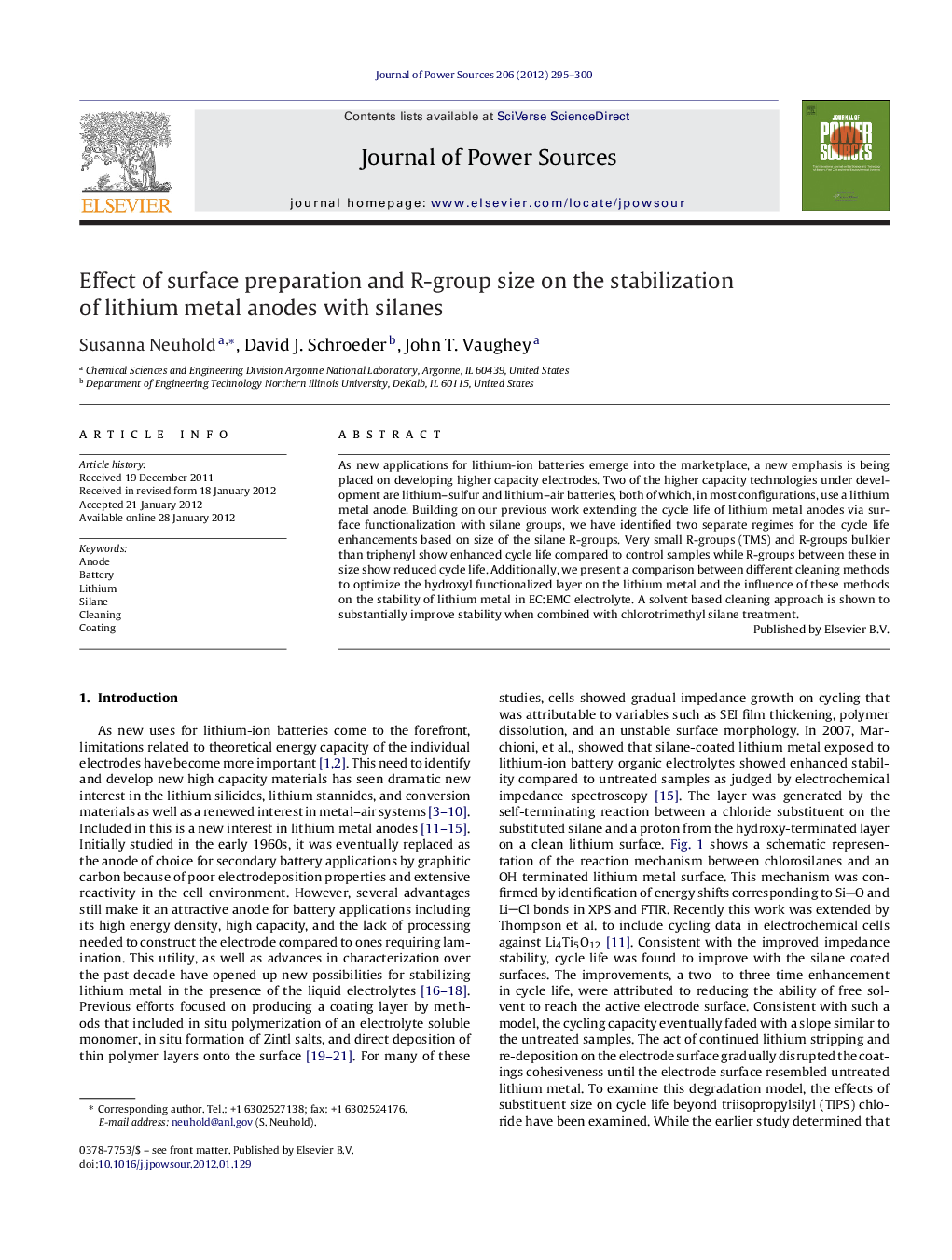| Article ID | Journal | Published Year | Pages | File Type |
|---|---|---|---|---|
| 1293089 | Journal of Power Sources | 2012 | 6 Pages |
As new applications for lithium-ion batteries emerge into the marketplace, a new emphasis is being placed on developing higher capacity electrodes. Two of the higher capacity technologies under development are lithium–sulfur and lithium–air batteries, both of which, in most configurations, use a lithium metal anode. Building on our previous work extending the cycle life of lithium metal anodes via surface functionalization with silane groups, we have identified two separate regimes for the cycle life enhancements based on size of the silane R-groups. Very small R-groups (TMS) and R-groups bulkier than triphenyl show enhanced cycle life compared to control samples while R-groups between these in size show reduced cycle life. Additionally, we present a comparison between different cleaning methods to optimize the hydroxyl functionalized layer on the lithium metal and the influence of these methods on the stability of lithium metal in EC:EMC electrolyte. A solvent based cleaning approach is shown to substantially improve stability when combined with chlorotrimethyl silane treatment.
► We examine the influence of the cleaning method on the surface of lithium metal. ► We identify the importance of surface preparation for stabilizing lithium. ► Cycling stability is dependent on the size of the R-group of the chloro silanes.
